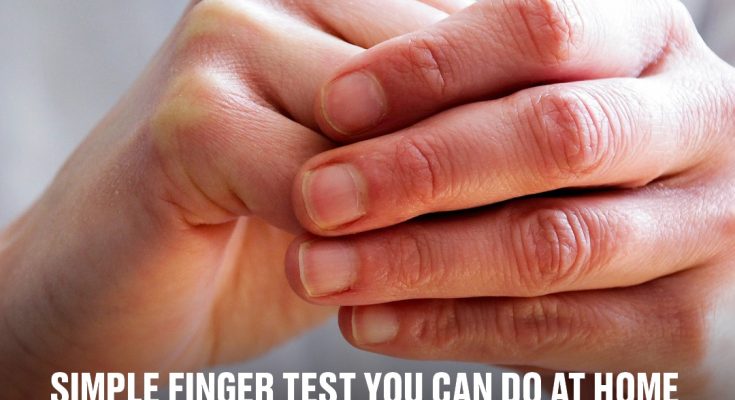It can be difficult to spot the signs of a serious health condition, which is why it’s so important that if you do notice anything unusual for you, it’s discussed with a doctor.
Of course, most of us know to look for the more noticeable signs, such as lumps, pain or changes in appetite, but there are other, more subtle changes that can sometimes indicate something isn’t quite right.
In fact, there’s one test you can do yourself at home – and it’s super simple.
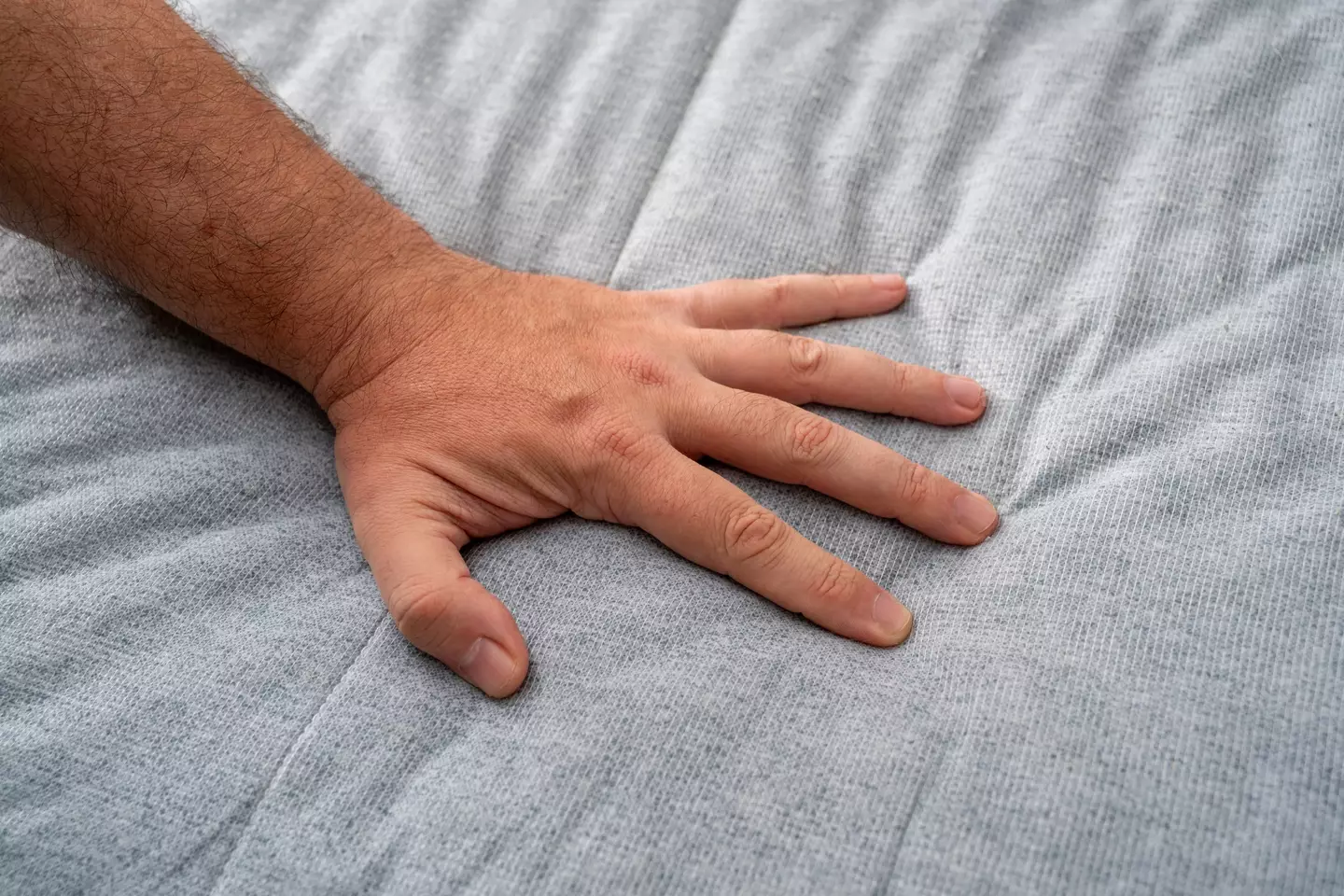
You can do the check yourself at home (Getty Stock Photo)
Dr. Ahmed, who also goes by @dra_says on TikTok, explained how to perform the Schamroth Window test, which detects finger clubbing.
‘Clubbed fingers’ refers to the way the ends of your fingers appear.
In clubbed fingers, the tips bulge and may become warm and discoloured, meanwhile the nail also curves down and appears like an upside-down spoon.
The change can indicate serious problems with the lungs or heart, so if you notice it, it’s important to seek medical advice.
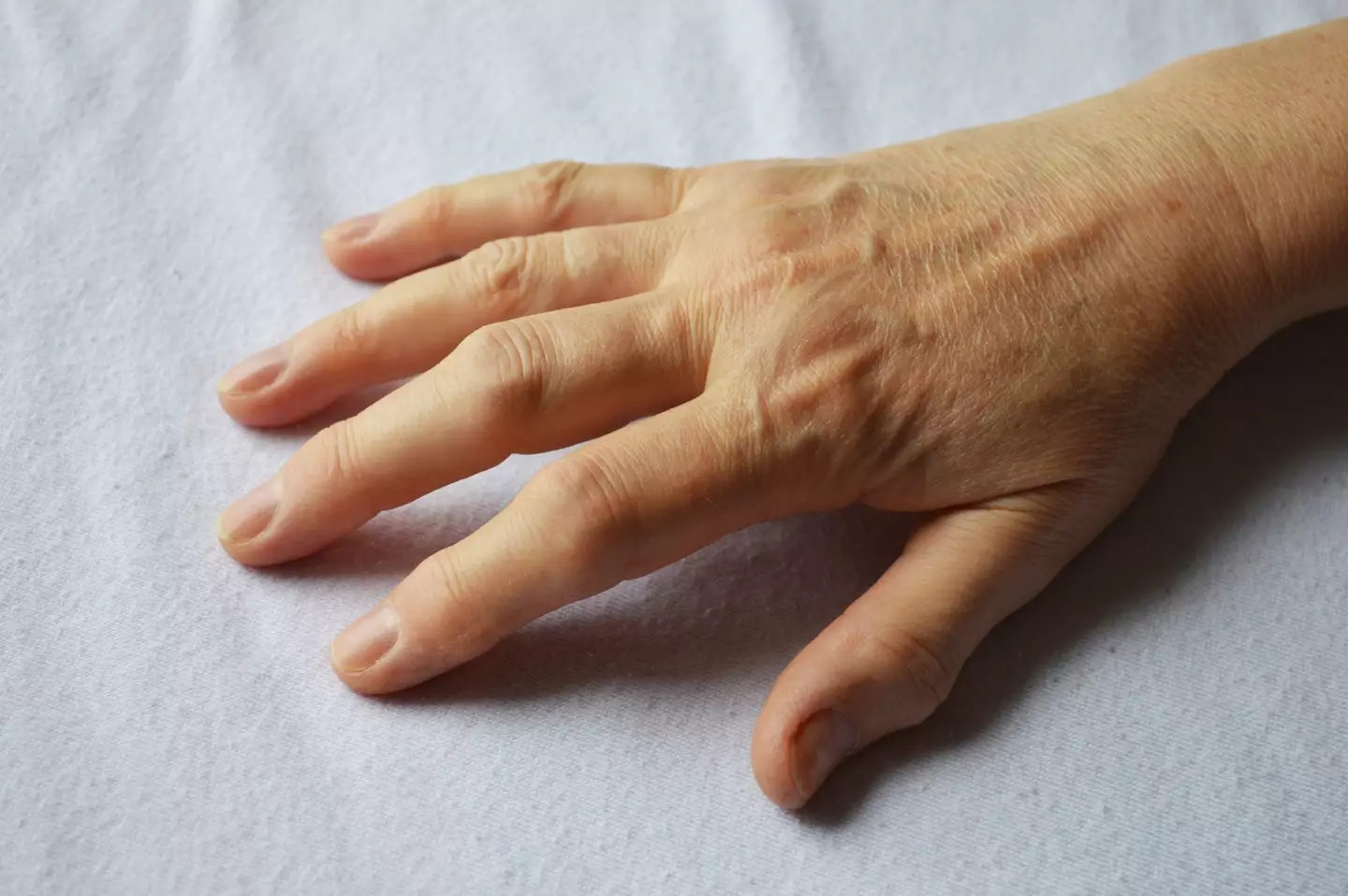
The test takes seconds to complete (Getty Stock Photo)
“You can all do this one test at home to see if you’ve got any serious heart or lung problems,” said Dr. Ahmed, before showing an image of normal fingers, compared to clubbed fingers.
“With clubbed fingers, you get a very round, bulb like fingertip.
“They can be very white and the base of the nails can be very shiny.
“The exact pathophysiology of a cause of finger clubbing is not fully known, however, the consensus at the moment is generally that it is down to some sort of chronically low oxygen levels.
“Clubbing is something we assess for very carefully on a physical examination.
“But it can have some serious causes. One of the causes is lung cancer… bronchiectasis, cystic fibrosis or a lung abscess.”
Dr. Ahmed went on to explain that a number of heart conditions can also cause the fingers to appear clubbed.
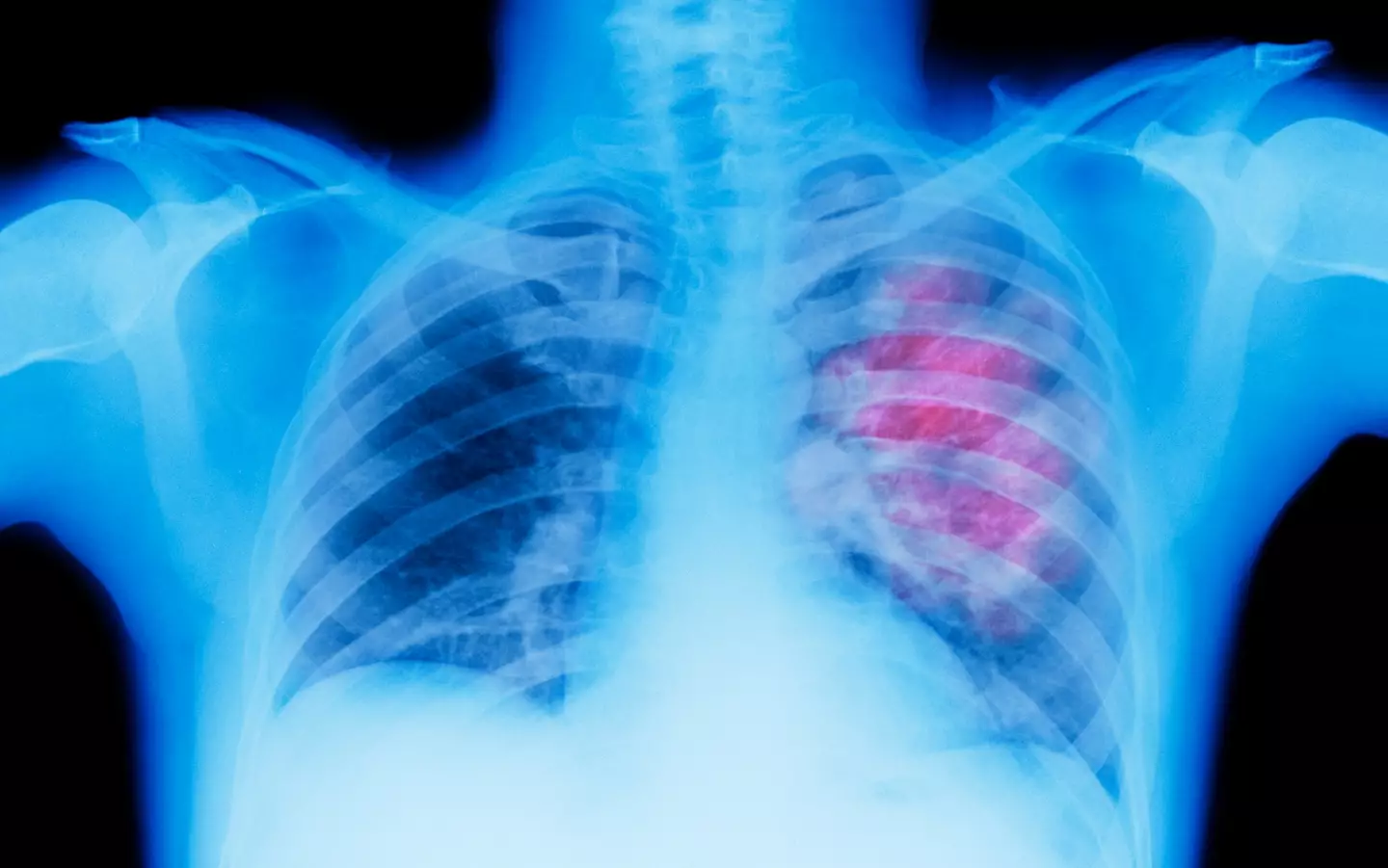
Clubbed fingers can indicate heart or lung issues (Getty Stock Photo)
How to check for clubbed fingers
To perform the simple test, Dr. Ahmed advised people to bring the fingertips of their two index fingers together so both nails are touching.
Kind of like if you’re making a love heart sign with your fingers.
There should be a small window at the base of both the fingernails.
“If you think you’ve got finger clubbing, especially if it’s new, you must get it checked out,” said Dr. Ahmed.
Featured Image Credit: Getty Stock Photos

If you were wondering whether you might kick the bucket prematurely in comparison to your peers, it turns out there’s a simple test you can complete which could give you a good idea.
It might not be the cheeriest of activities, but the good news is you can carry it out in the comfort of your own home – so there’s really no excuse not to give it a whirl, lads.
Nutrition expert Ed Jones, who founded health firm Nutrition World back in 1979, reckons the ‘power of natural health’ is the key to a long and happy life.
He’s a avid believer in holistic health and is a professional member of the American Botanical Council, which aims to encourage people to take care of themselves with the help of herbs and medicinal plants.
All in all, he’s quite the boffin when it comes to taking care of your body in the most natural way possible.

Nutrition expert Ed Jones alongside his daughter and business partner Cady Kuhlman (Nutrition World)
In an episode of his Nutrition World Podcast, which he hosts alongside his daughter Cady Kuhlman, the expert touched on a trick he’d learnt from Dr Peter Attia, who is a leading expert in longevity medicine.
The medic is renowned for his work in the field, having opened a private clinic dedicated to extending the lifespan of patients back in 2014.
On top of this, Dr Attia is always sharing his knowledge on how the right nutrition and physical activity can help people live longer, so Jones seems to hold him in high regard.
The one and only Chris Hemsworth does too, as Dr Attia was the medic who worked alongside him on the Disney Plus documentary series Limitless to investigate how humans can stave off their death by switching up their lifestyle.
So, now you know he’s even got the A-list stamp of approval, let’s get down to it.
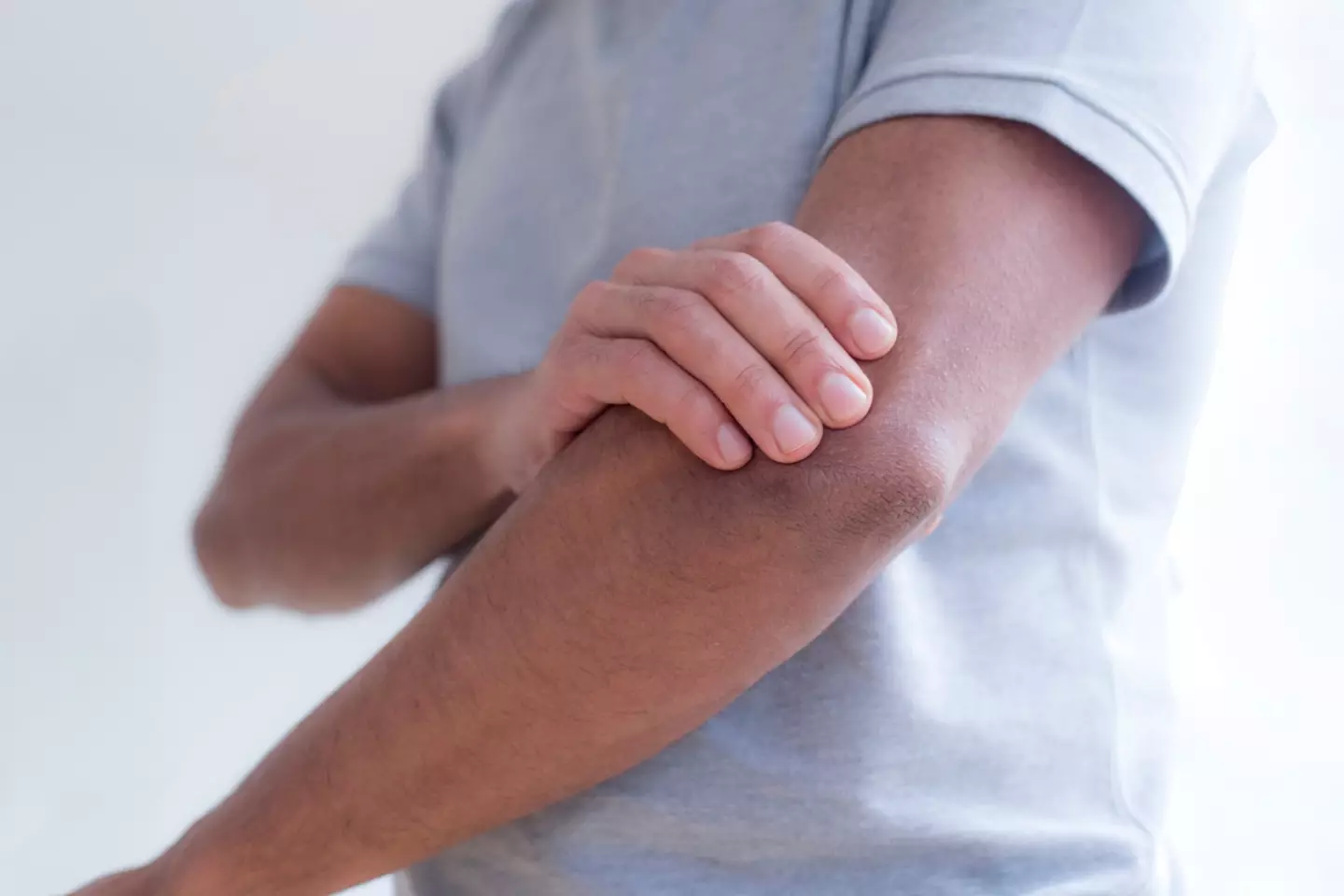
The nutrition expert revealed how the ‘grip strength’ test can be an indicator of early mortality (Getty Stock Photo)
Discussing Dr Attia’s mortality test, Jones explained that his fellow nutrition expert believes that a strong body is a long-lasting one – so a weaker person would be more at risk of early mortality.
Speaking on the Nutrition World Podcast, the health expert revealed that there is a simple test which ‘doctors never ask about’ that could suggest you’re en route to an early grave, which he dubbed ‘grip strength’.
He explained: “If you can’t hold a dumbbell that’s 3/4ths of your weight for one minute, you will die earlier than you would if you were stronger. That beats cholesterol, it beats every blood test.
“How many health professionals have asked you that? None, none.”

All you need to complete it is some dumbbells and a spare minute (Facebook/Nutrition World)
Elaborating on this, he explained that a person’s grip strength is a ‘marker for how everything else will weaken’.
“Everything,” Jones continued. “Your heart, every system of your body.
“If you can do this with the right weights, everything else is stronger. The stronger and resilient body ages slower and has less disease.”
Those who are unable to do so might want to work on building some strength up to turn the tables, he explained.
Plenty of studies back up this idea, as those who tend to be stronger are at lower risk of deadly diseases as well as cardiovascular and respiratory issues.
But even if you’re not convinced that the grip strength test will yield any accurate results, surely there is no harm in giving it a go, is there?
Dig out those dumbbells, people!
Featured Image Credit: Facebook/Nutrition World/Getty Stock Photo
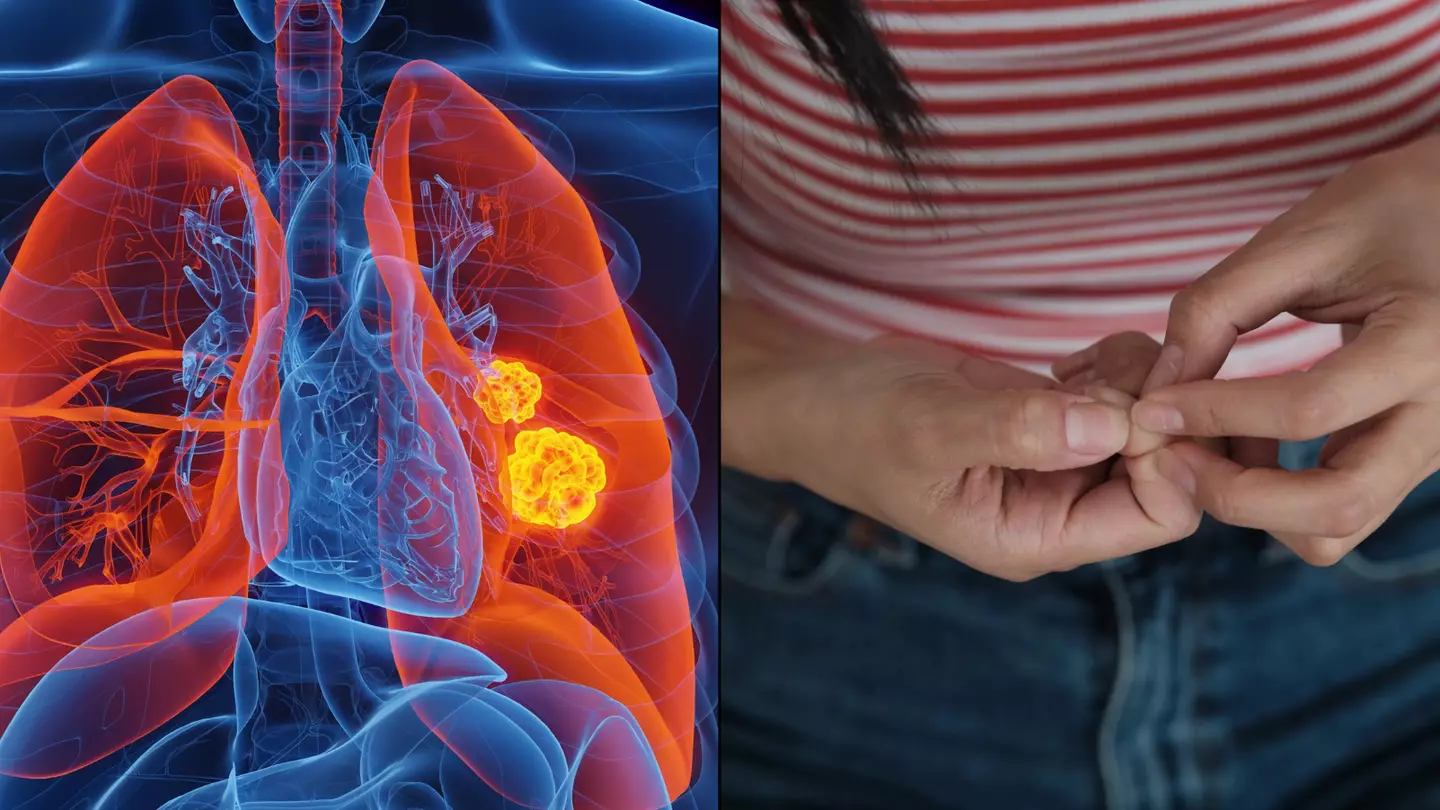
Lung cancer is something that sadly affects thousands of Brits each year, but there’s one test you can do at home which allows you to potentially catch the signs early.
According to Cancer Research UK, between 2016 and 2018, there were 48,549 new cases of lung cancer in the UK population.
As a serious condition which can spread rapidly, catching lung cancer early is essential.
This simple test is something you can do on-the-go or at home – you can even do it right now and it takes seconds!
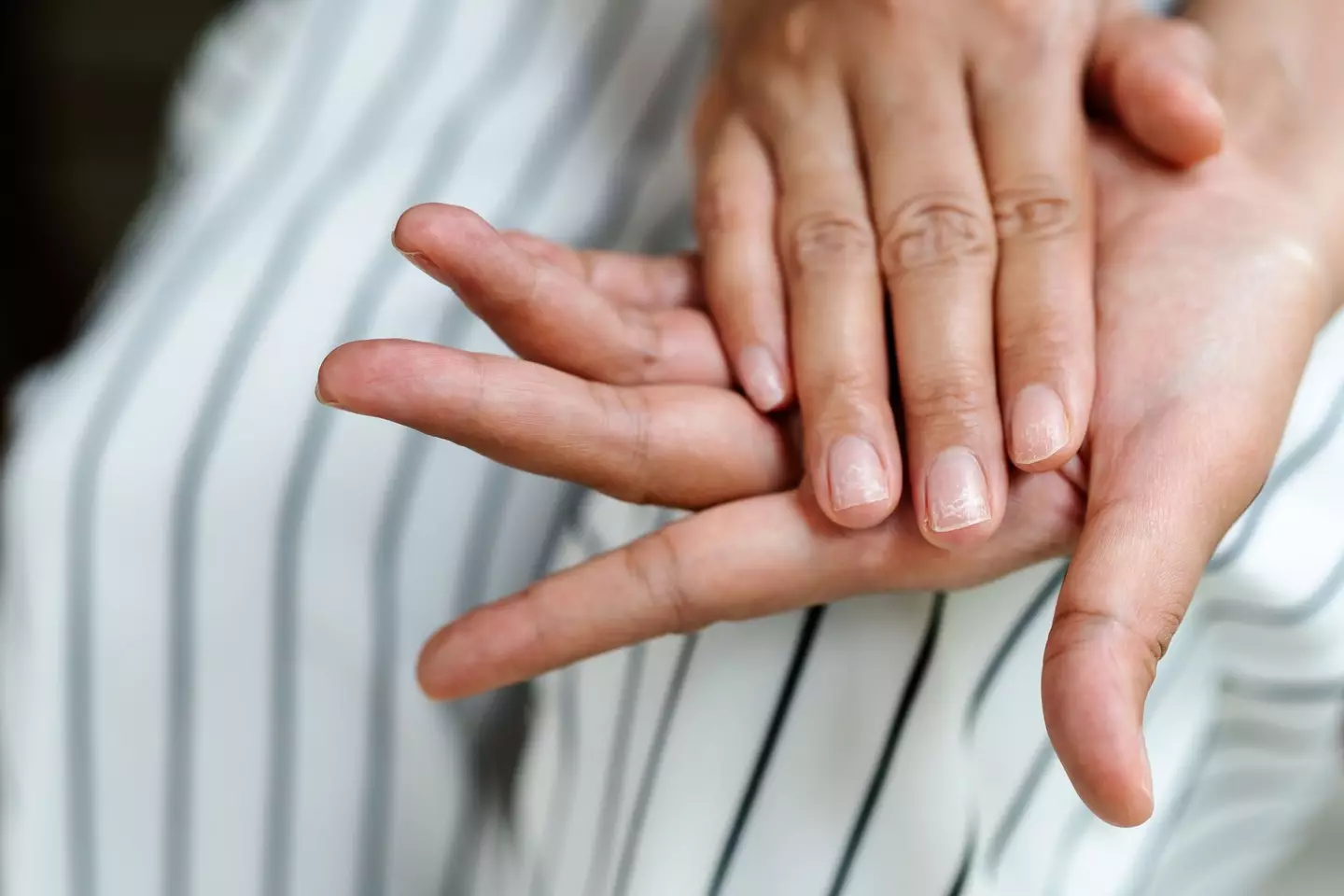
The finger test can help you spot early signs of lung cancer. (Getty Stock Image)
As a potential life-saver, why risk leaving it until your symptoms are staring you in the face?
Here’s how you can do it:
- Put your fingernails together as if you’re making a heart using both hands.
- Start with your index fingers and slowly take turns with your other fingers until you finish with your pinkies.
- Now, do you see a little diamond-shape space in the middle of your two fingernails when they meet?
That’s exactly what you want to see!
If you don’t, you may need to take a closer look at your nails as ‘clubbing’ could be a sign of early-stage lung cancer.
What is clubbing?
Clubbing can take years to develop and is usually a sign of an issue with the heart or lungs.
Cancer Research UK determines it as: “Certain changes in the shape of your fingers and fingernails. It is also called digital clubbing or Hippocratic fingers.
“People with conditions such as heart or lung problems sometimes have these changes.”
The charity describes it as unfolding in stages and that it begins as ‘softening of the base of the nail (nail bed) and redness (erythema) of the skin around the nail’ as well as the skin below the cuticle becoming curvier, the skin around the nails becoming shiny before the ends of the fingers growing larger and looking ‘clubbed’- as though they are bulbous.
Brian Gemmell, a lung cancer patient, told The Sun about the importance of early intervention: “Go and see your doctor If you’ve got anything that you’re concerned about – that’s what a GP is for. Go as soon as you can.”
Dr Helen Piercy, a GP from West Lancashire also advised that any symptom needs to be checked out.
She said: “If you notice any signs or symptoms that concern you, see your GP. First phone for an appointment. You will be assessed. You will be invited in, if you need to be seen face-to-face. Don’t be afraid. Pick up the phone.”
Whilst finger changes could be a sign, there are more common lung cancer symptoms to be aware of.

Catching lung cancer early is vital in increasing the chances of survival. (Getty Stock Image)
The NHS details these symptoms as:
· A cough that doesn’t go away after 2 or 3 weeks
· A long-standing cough that gets worse
· Persistent chest infections
· Coughing up blood
· An ache or pain when breathing or coughing
· Persistent breathlessness
· Persistent tiredness or lack of energy
· Loss of appetite or unexplained weight loss
If you show signs of any of the above symptoms, make sure to see your GP to rule out underlying issues.
If you’ve been affected by any of these issues and want to speak to someone in confidence, contact Macmillan’s Cancer Support Line on 0808 808 00 00, 8am–8pm seven days a week.
Featured Image Credit: Getty Stock Image
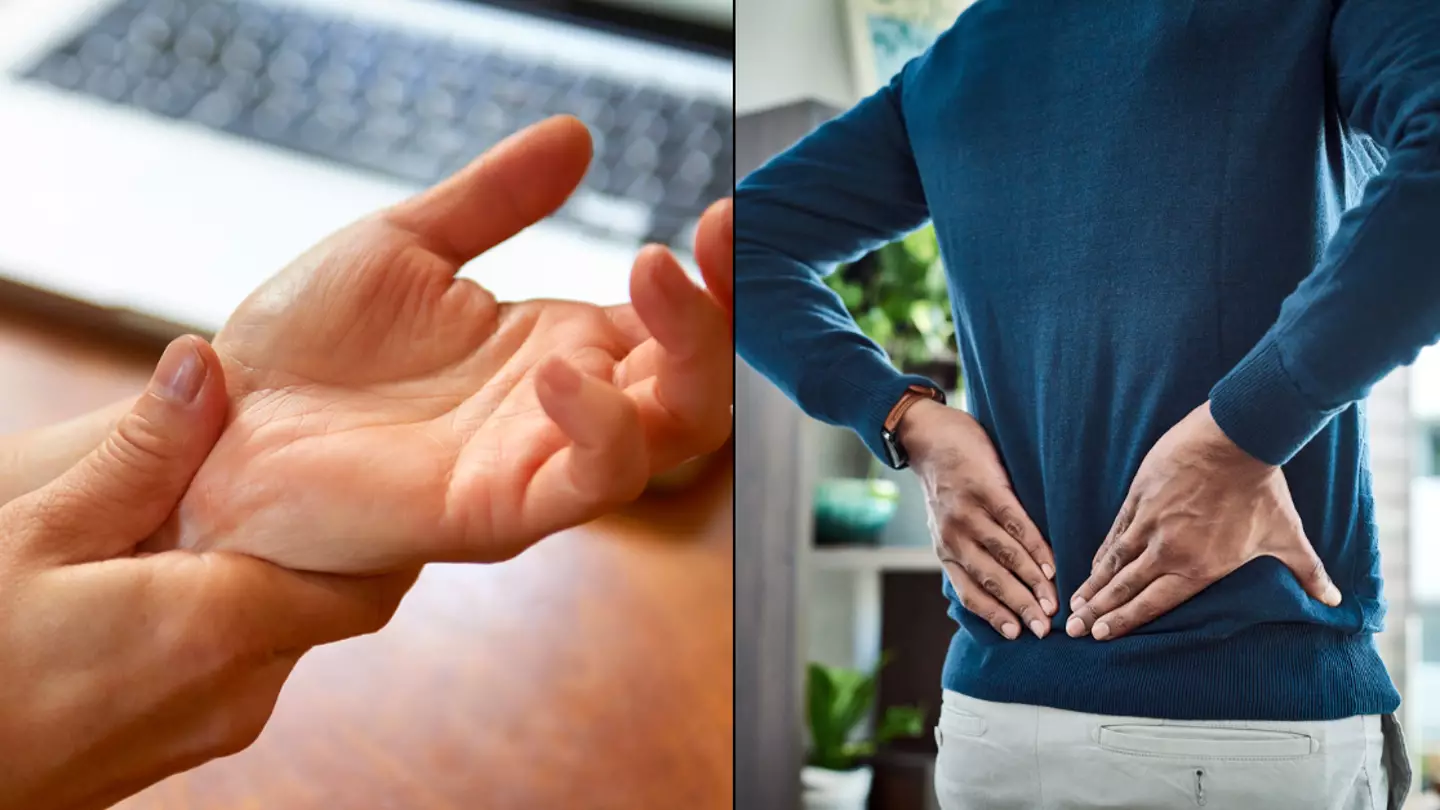
Here is a super simple test which takes just 60 seconds and could reveal if you’re suffering from a common health problem.
Modern technology such as smartphones and computers has improved our lives, but our excessive connectivity is something which one part of our wrists and hands won’t be thanking us for.
Phrases such as ‘smartphone hand’ and ‘texting claw’ have been coined in the past couple of years to refer to the strain placed on our digits.

Could your lifestyle be causing this common condition? (Getty Stock Images)
When it comes to people who spend several hours a day tapping away at computers, carpal tunnel syndrome is something you’re at a very real risk of developing.
What is carpal tunnel syndrome?
According to the NHS, carpal tunnel syndrome (CTS) is a condition which occurs when the median nerve of the wrist is compressed.
Symptoms of CTS typically include an ache or pain in your fingers, hand or arm, as well as a tingling or ‘pins and needles’ sensation in the same area, numb hands, and reduced grip strength.
CTS was previously caused by wrist injuries, diabetes and pregnancy – however, the condition is increasingly being associated with office workers due to the fact that they spend around seven to eight hours a day tapping away on keyboards.
Treatments for CTS include painkillers, wrist exercises, and wearing a support brace. Severe cases can potentially need surgical intervention.
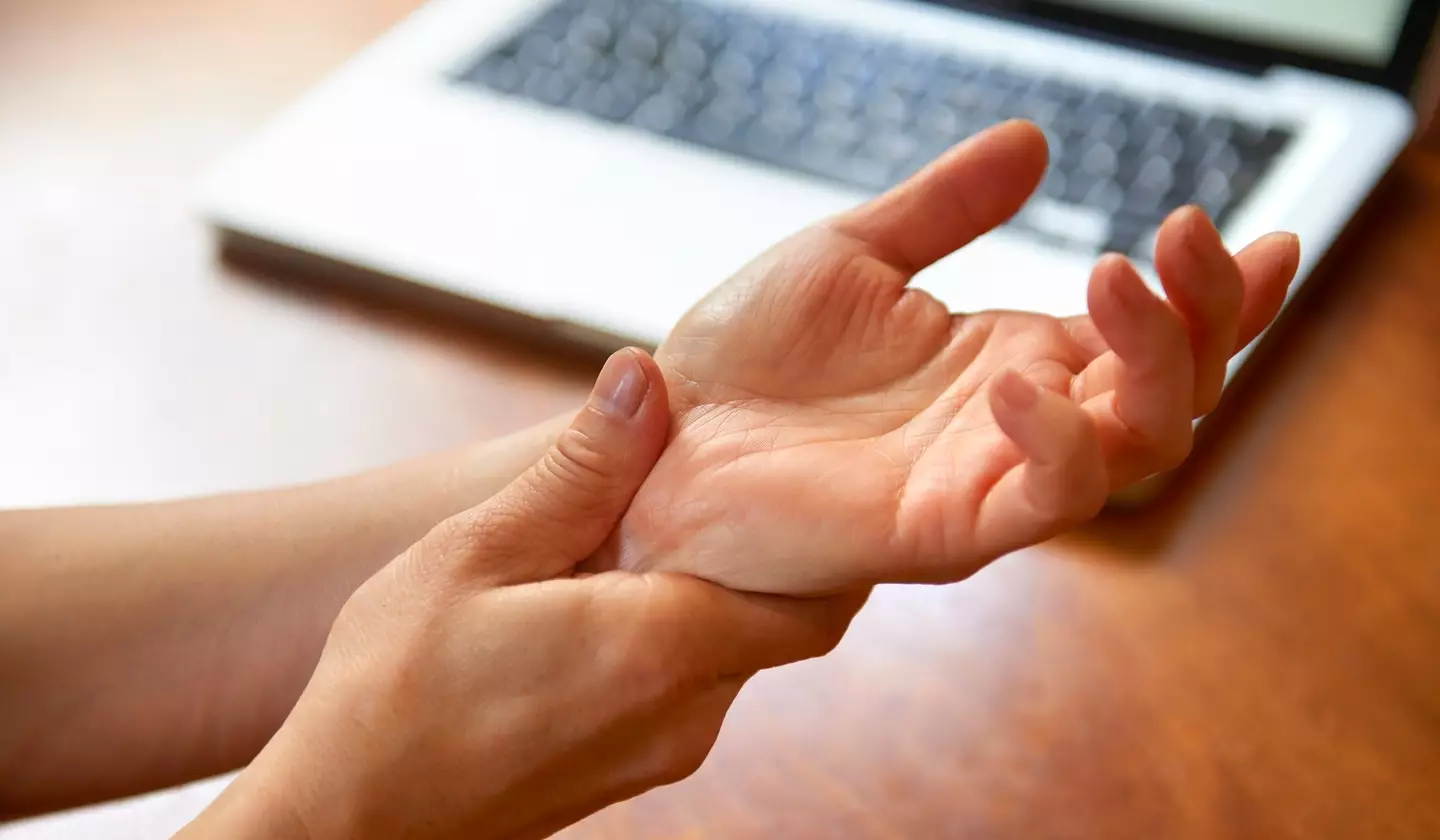
Carpal tunnel syndrome is common amongst people who use computers for their work (Getty Stock Images)
How to tell if you may be suffering from carpal tunnel syndrome
If you’re worried that you may be suffering from CTS, there is a very simple test you can do right away, which doesn’t involve the use of any medical equipment.
Sharing the test via his TikTok account, US-based doctor Dr Myro Figura explained that placing the backs of both your hands together (while pointing down) and holding the position for 60 seconds – adding that it was the ‘number one test’ for diagnosing carpal tunnel syndrome.
Figura went on to explain that anyone who experiences pain, tingling or numbness in their first three fingers (thumb, index and middle) may have the condition.
Going on to explain how the test – which is referred to clinically as Phalen’s manoeuvre or Phalen’s test – works, he continued: “The reason why that works is because Carpal Tunnel Syndrome is impingement of median nerve at the wrist. This motion puts pressure on the nerve and that nerve innovates these three fingers.”
Thankfully, there’s plenty of advice out there on the internet on how to make adjustments for CTS caused by office work, which includes using a wrist support, an ergonomic keyboard, adjusting your chair to allow for proper wrist alignment and taking breaks to stretch your wrists and hands.
Featured Image Credit: (Getty Stock Images)
Topics: Health, Technology, NHS, TikTok, Social Media
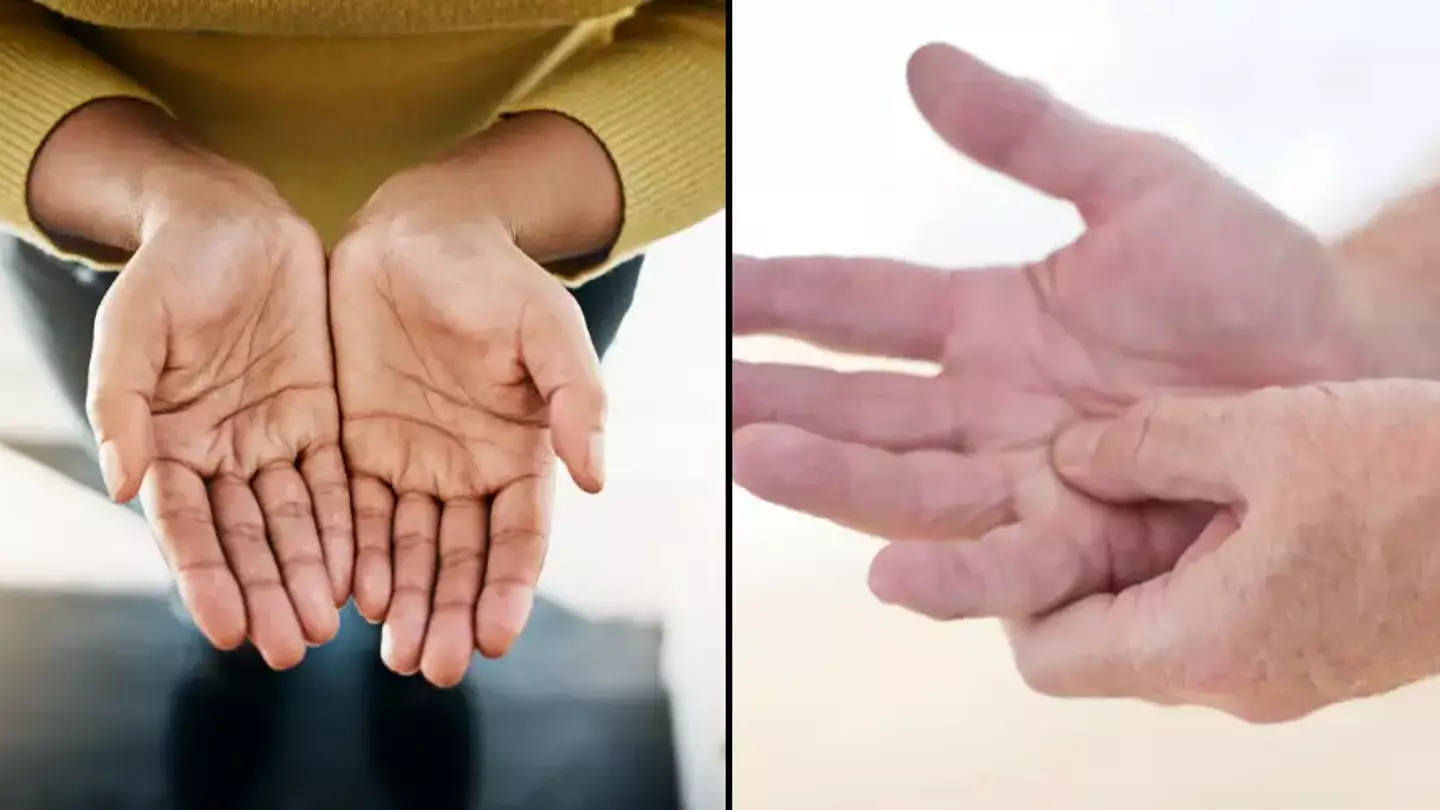
Brits have been advised to take a quick test from home which could reveal whether or not you could be suffering from a worrying disease.
Have you ever noticed your fingers and toes getting unbearably cold, numb or even painful when you’re exposed to colder temperatures for an extended period of time?
Perhaps your digits will even change colour or the condition will flare up when you’re stressed.
Although all of us will eventually feel the effects of the cold, these symptoms could be indicative of an underlying condition.
.jpg)
Fingers and toes changing colour is a symptom of Raynaud’s (Getty Stock Images)
The condition is Raynaud’s disease and can be triggered by exposure to colder temperatures as well as stress.
What is Raynaud’s disease?
Raynaud’s disease is a condition that impacts blood circulation to your extremities, such as your fingers and toes. Referred to as either Raynaud’s disease, Raynaud’s syndrome or simply Raynaud’s, the condition can be triggered by cold temperatures, anxiety or stress.
According to NHS Inform, it’s believed that around 20% of the global adult population could be suffering from Raynaud’s – which could mean as many as 10 million people in the UK could be suffering from the condition.
What are the symptoms of Raynaud’s disease?
The main symptom of Raynaud’s disease is seeing the tips of fingers and toes changing colour due to the lack of blood flow. The tissue will initially turn white due to the lack of blood flow before turning purple due to a lack of oxygen.
Raynaud’s patients can also experience their fingers and toes turning blue, as well as painful tingling and throbbing in the affected area.
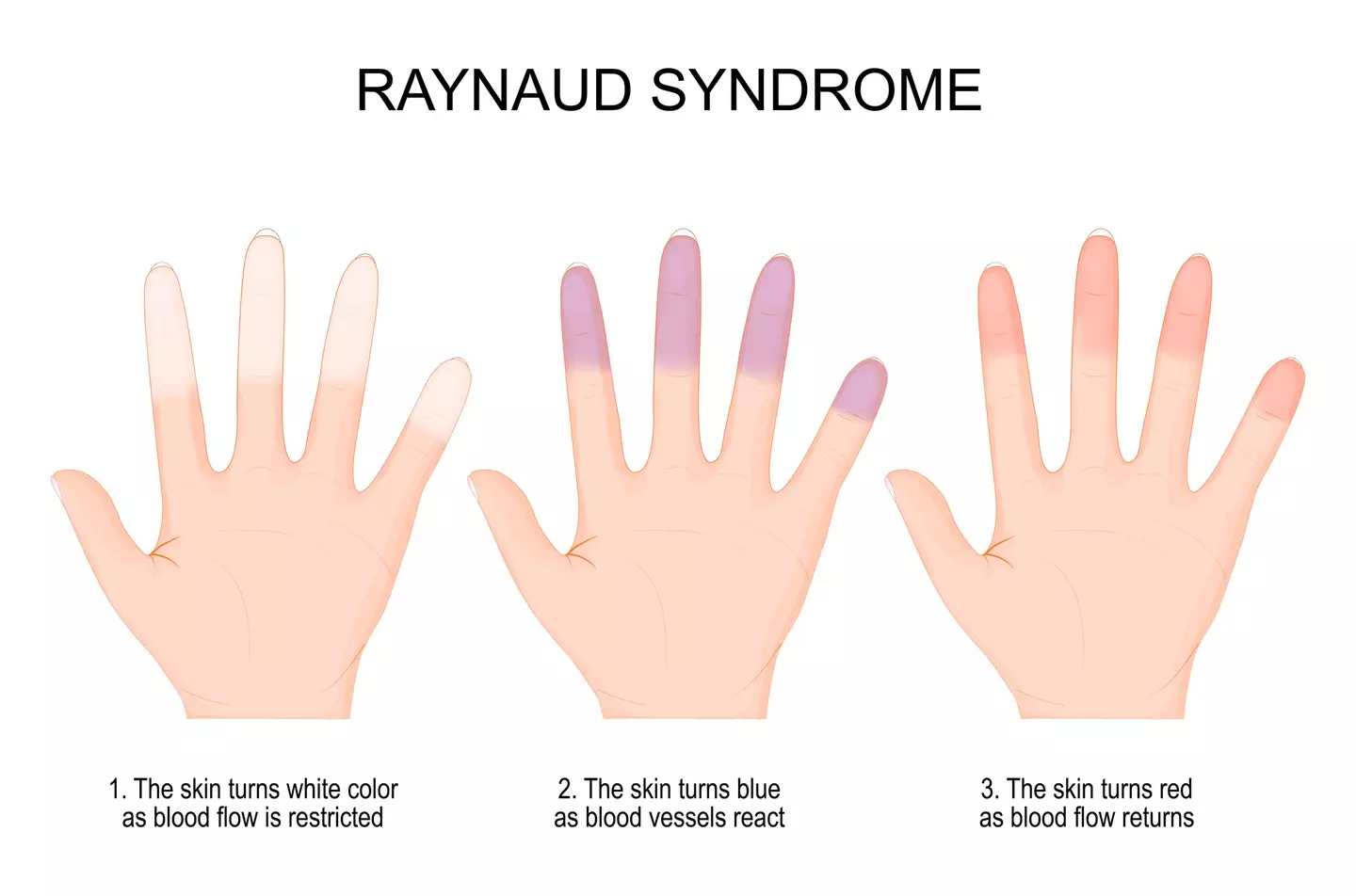
How symptoms of Raynaud’s can present (Getty Stock Images)
The disease is often classified as either primary or secondary Raynaud’s, depending on the cause of the disease.
Primary Raynaud’s is where the condition forms by itself and has no known link to any other diseases. It is believed primary Raynaud’s is caused by ‘disruptions in how the nervous system controls blood vessels’ and may also be an inherited condition.
It is also believed to be the most common form of the disease.
Meanwhile, secondary Raynaud’s is often triggered by an underlying health condition. This can include infections, certain medications, auto-immune disorders, and even cancer in some cases.
Raynaud’s can also be an early indicator of auto-immune disease called scleroderma, which causes hardening and thickening of the skin. Although rare, scleroderma can be life-threatening if the condition spreads from the skin to joints and internal organs.
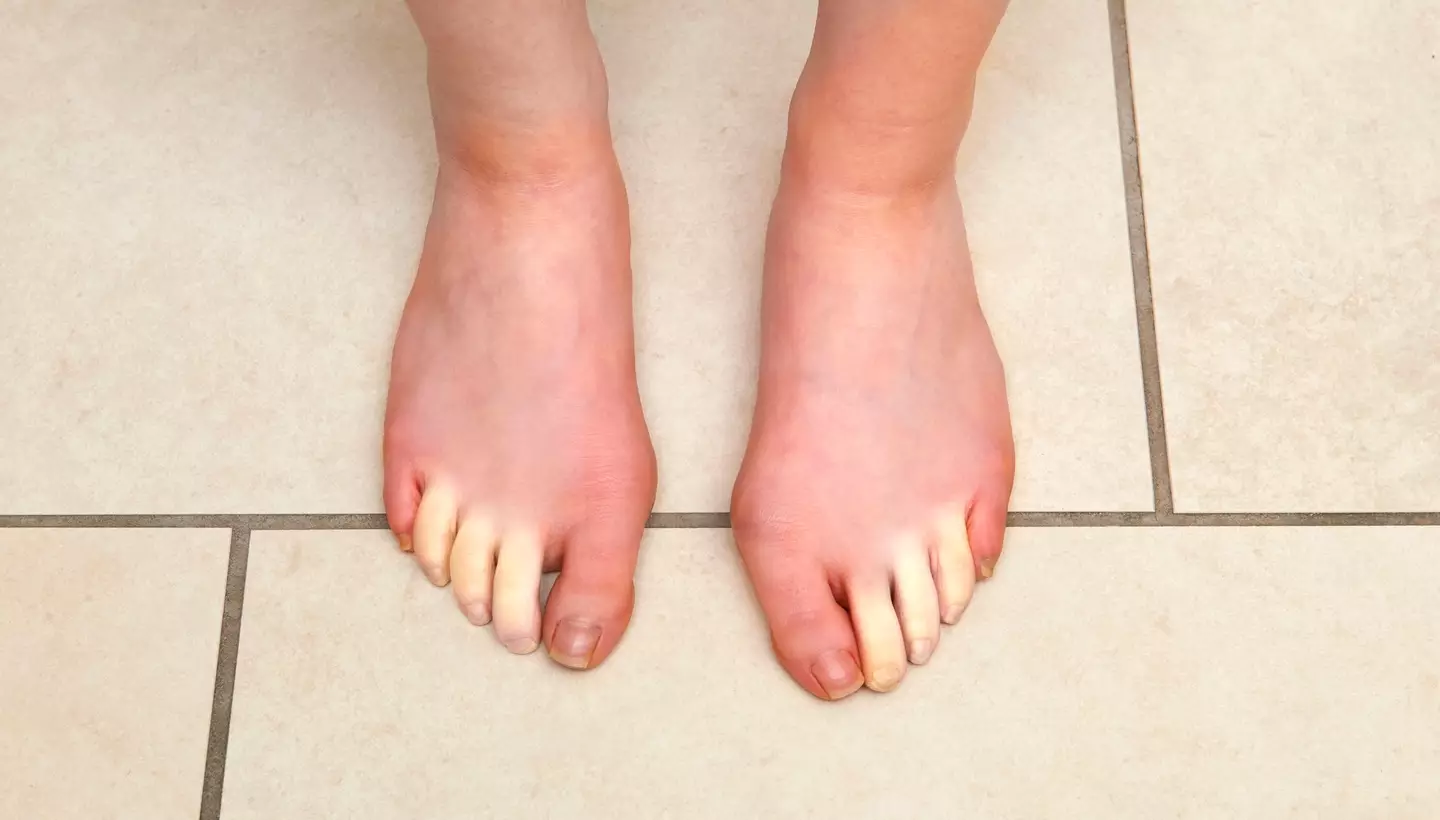
Symptoms can be present in the fingers and toes (Getty Stock Images)
It’s believed that around 20,000 Brits could have scleroderma, while one in six have Raynaud’s.
How can you test for Raynaud’s disease?
If you’re concerned about whether or not you may have the condition, there is a test created by Scleroderma and Raynaud’s UK which can be done in as little as 60 seconds.
Available here, users are asked to answer five questions and further advice on Raynaud’s is provided, as well as advice to contact your local GP with any further concerns.
